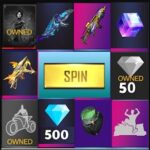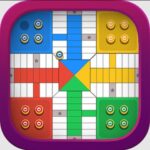Hearthstone: The Ultimate Guide to Blizzard’s Digital Card Game
Hearthstone is one of the most popular and influential digital collectible card games (CCG), developed by Blizzard Entertainment. Based on the lore of Warcraft, Hearthstone offers players an immersive, strategic, and highly competitive experience with fast-paced gameplay, regular updates, and a constantly evolving meta. Whether you are a seasoned player or new to the world of digital card games, this detailed guide will walk you through everything you need to know about Hearthstone—from gameplay mechanics to strategies and advanced tips.
1. What is Hearthstone?
Hearthstone is a free-to-play, turn-based card game where players build decks using cards representing characters, spells, and abilities from the Warcraft universe. Players then face off against each other in duels to reduce the opponent’s Hero Health to zero. It combines elements of strategy, resource management, and a bit of luck, creating an experience that is both accessible to beginners and challenging for seasoned players.
1.1 Game Overview
The game’s structure is simple: each player starts with a Hero who has a set amount of health, and they use cards to summon minions, cast spells, and attack their opponents. Players need to strategically manage their cards, plan their moves, and outwit their opponent to claim victory.
Hearthstone offers various game modes, including ranked and casual matches, as well as single-player adventures and challenges that help players improve their skills.
2. Core Gameplay Mechanics
2.1 Heroes and Classes
Each player selects a Hero at the start of the game, and each Hero belongs to one of nine classes:
- Druid
- Hunter
- Mage
- Paladin
- Priest
- Rogue
- Shaman
- Warlock
- Warrior
Each class has its own unique set of cards (spells, minions, and weapons) that dictate its strengths, weaknesses, and playstyle. For example, the Mage class can focus on powerful spells, while Warriors rely more on minions and weapons to control the battlefield.
2.2 Mana and the Mana Curve
At the start of the game, each player has 30 cards in their deck. To play cards, players use Mana, which is a resource that increases by one point each turn, starting from one. Players can use this mana to summon creatures, cast spells, and attack the enemy. Managing mana is a key part of Hearthstone strategy, and understanding the “Mana Curve”—the distribution of cards in your deck by mana cost—helps create smoother turns and better gameplay flow.
2.3 The Game Board
The game board is divided into two sides:
- The Player’s Board: This is where minions (creatures) and weapons are played. Minions have Attack and Health values, and they can attack enemy minions or the opponent’s Hero.
- The Opponent’s Board: Similarly, your opponent’s minions and weapons are placed here, and you must use your cards to deal with them.
The player who reduces their opponent’s Hero Health to zero wins the game. The game involves not only summoning creatures and casting spells but also making strategic choices regarding when to attack, when to defend, and when to use resources.
3. Building a Deck
In Hearthstone, each player builds a deck of 30 cards, which can consist of minions, spells, weapons, and hero powers. Deck-building is one of the game’s most strategic elements, and understanding how to construct a competitive deck is crucial.
3.1 Deck Archetypes
Different deck archetypes define how a player approaches the game. Some popular deck archetypes include:
- Aggro: Fast, aggressive decks that aim to overwhelm the opponent with quick minions and direct damage.
- Control: These decks focus on surviving the early game, slowly taking control of the board with powerful cards, and defeating the opponent in the late game.
- Midrange: Midrange decks balance between aggressive plays and powerful late-game cards, allowing players to adapt to various situations.
- Combo: Decks that rely on setting up powerful combinations of cards to finish the game in one fell swoop.
- Ramp: Decks that focus on gaining mana faster (often through cards that increase mana or accelerate growth), leading to playing large minions early.
3.2 Card Types
- Minions: Creatures that are summoned onto the battlefield. They can attack, defend, and trigger special effects when summoned or destroyed.
- Spells: These cards have one-time effects, such as dealing damage, healing, or drawing cards.
- Weapons: Cards that equip your Hero with a weapon, allowing them to attack directly.
- Hero Powers: Each Hero has a unique power that can be used once per turn. Hero Powers are often a defining feature of each class.
3.3 Legendary, Epic, Rare, and Common Cards
Cards in Hearthstone come in various rarities:
- Common: Easy to get and generally less powerful.
- Rare: Slightly stronger or with special abilities.
- Epic: More powerful and often with more complex mechanics.
- Legendary: The rarest cards, often with game-changing abilities, but can be difficult to obtain.
4. Game Modes
Hearthstone offers a wide variety of game modes, each designed to offer a different experience. Here are some of the main game modes:
4.1 Standard and Wild
- Standard: A format that only allows cards from the most recent expansions, rotating out older cards periodically. This format keeps the game fresh and balanced.
- Wild: A more open format that allows cards from all expansions ever released. Wild formats often feature more powerful decks and strategies but can be harder to balance.
4.2 Ranked Play
In Ranked Play, players compete against others in a competitive setting to climb the rank ladder. Each season, players are matched based on their rank, and rewards are given based on performance at the end of the season.
4.3 Casual Play
In Casual Play, players can experiment with new decks and strategies without the pressure of ranked rewards. This mode is more about fun and practice.
4.4 Arena Mode
In Arena Mode, players build a deck from a random selection of cards and compete against other players in a tournament-style bracket. Players earn rewards based on how many games they win.
4.5 Adventures
Single-player content in Hearthstone is delivered through Adventures. These are PvE (Player vs. Environment) modes where players can face off against AI-controlled bosses and challenges. Adventures often unlock unique rewards, including new cards.
4.6 Battlegrounds
A Battle Royale-style mode where players pick heroes and recruit minions that automatically fight each other in a simulated battle. This mode has gained popularity for its auto-battler mechanics, where strategy revolves around hero choice and minion synergies.
5. Strategies for Success
To be successful in Hearthstone, you need a combination of solid deck-building, good gameplay tactics, and the ability to read your opponent’s moves.
5.1 Mana Efficiency
Understanding how to maximize the value of your mana is crucial. Playing cards that give you the most value for their mana cost, whether through efficient trades or powerful effects, can often determine the outcome of a match.
5.2 Board Control
The ability to control the board with strong minions or spells is often more important than direct damage. Clearing your opponent’s minions and maintaining pressure on the board is key to victory.
5.3 Card Advantage
Card advantage refers to having more cards in hand than your opponent, giving you more options and flexibility. Drawing extra cards, using efficient removal spells, and creating situations where your opponent has to trade multiple cards to deal with a single threat are good ways to gain card advantage.
5.4 Reading the Meta
The meta refers to the dominant strategies, decks, and tactics being used by players in the current environment. Understanding the meta can help you predict the strategies your opponents will use and tailor your deck to counter them effectively.
5.5 Timing and Patience
Hearthstone is a game of patience and timing. Deciding when to use your resources, whether to attack, or when to hold off and wait for the perfect moment is essential for success. Sometimes, playing defensively and waiting for your opponent to make mistakes can lead to a comeback.
6. Progression and Rewards
Hearthstone offers various ways for players to earn rewards and progress through the game, both for free and with monetary investment.
6.1 Quests and Daily Missions
Players can complete daily quests to earn gold, which can be used to buy packs, enter Arena mode, or purchase adventures. Completing Seasonal quests and Challenges provides additional rewards.
6.2 The Shop and Microtransactions
While Hearthstone is free to play, players can purchase additional packs of cards, Arena tickets, and cosmetics (such as card backs or Hero skins) through microtransactions. The game also features the Hearthstone Battle Pass, which gives players access to exclusive rewards as they level up.
6.3 Expansions and Updates
Blizzard regularly releases new expansions that introduce




